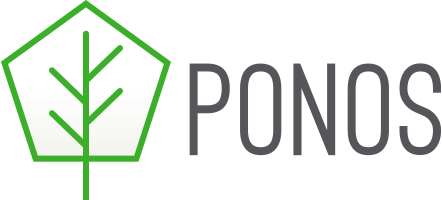The path to designing the world’s best products is often paved by an obsession. What that obsession is varies from company to company. For Steve Jobs he often obsessed about Apple's user experience, forcing him to consider all aspects of the product -- the look, feel, features, cost, interface, materials, packaging, even the purchase process. At Ponos, we're obsessed with democratizing food production so that fresh, organic produce is always within arm's reach. User experience and simplicity are a huge focus for us to get our solutions into homes, schools, restaurants, urban farms, and more.
Food for thought
Several months ago, a few of us grabbed some beers and started waxing philosophically about the global food system. As we ranted about how far food travels, how much is wasted, and how unsustainable things are, we considered how we could use our experience around data and machine learning in combination with our passion for making food more sustainable and accessible, and created a set of core design principles.
Food travels too far
It has been estimated that for a meal in the US to go from farm to plate, it travels an average of 1500 miles. Additionally, over 50 percent of fruits and 20 percent of vegetables are shipped to the US from overseas. This system was originally designed to reconcile the year-round consumer demand for diverse product selection and the constraints of climate, seasonality, and inevitable regional crop loss due to drought, pests, etc. However, this system creates a lot of pollution, is highly dependent on fossil fuels, and has led to food being optimized for durability and shelf-life instead of nutritional value and flavor. Luckily, farming technology has gotten much smarter and more cost-effective making this complex, over-extended supply chain unnecessary. In the same way that the cost economics of solar energy is hitting a tipping point, "micro-farming" in small plots and urban farms is becoming highly profitable and scalable. The future of food is hyperlocal and smaller-scale.
INCREASING Urbanization BREAKS EXISTING FOOD INFRASTRUCTURE
Today, 54 percent of the world’s population lives in urban areas, and it is expected to increase to 66 percent by 2050. As more people move into city environments, food deserts are growing in size and in number, where high-calorie but nutrient-poor food (fast food, junk food) is the only thing available for miles. Transporting food into and out of congested cities becomes more and more difficult as traffic grows and metropolitan boundaries spill outward. The largest cities like New York City actually struggle with sunlight, where outdoor growing on rooftops and balconies are burdened with poor light quality. The future of food compensates for our increasingly urbanized world.
Traditional farming techniques are inefficient
Traditional farming techniques (i.e. using soil) are horribly inefficient. Hydroponics uses 90% less water, 50%-75% less fertilizer and added nutrients, and grow plants 5x faster. When plants grow in soil, they’re wasting energy on growing root systems and stalks instead of focusing on edible produce, fruiting, or budding. Also, the latest lighting technology can be very energy-efficient, keeping utility costs very low. Finally, controlled indoor or greenhouse environments allow temperature, humidity, wind, CO2 and more to be monitored and controlled. This gives farmers the ability to not only maximize quality and yield, but also grow any crops in any climate. The future of food leverages hydroponics and controlled environments for efficiency and the ability to grow diverse crops in any location.
TRADITIONAL farming is not flexible enough
People have different eating habits, and food demand has trends and fashions. Traditional farming approaches do not have the flexibility to chase these fast changing market dynamics. Hydroponics and controlled environments, combined with a high degree of modularity, allows for many different plants to be grown simultaneously and for plants to be switched out in a moment's notice. The nutrient mix, environmental targets, lighting, etc. can automatically be adjusted. The future of food is agile and demand-driven, not supply-driven.
Farming requires specialized knowledge
Agriculture for most of society is a lost art. Growing your own crops efficiently and effectively is not easy and not everyone has the patience or the time to dedicate to the task. The only way to achieve the type of change we're aiming for is to make growing your own crops simple, intuitive, painless, aesthetically pleasing, and as fun as possible. The future of food uses technology to automate as much as possible and provides guided learning for novice farmers.
Enterprise farming technology is expensive and complex
Most enterprise farming solutions are very costly and complex to deploy. The same is true for traditional hydroponics solution providers. Cost must be considered in all aspects of design in order to achieve the greatest scale and thus the greatest global impact. Again, we could design an incredibly expensive and precise system but the law of diminishing returns needed to be considered when making component decisions. The future of food is powered by open source software, commodity sensors, cloud infrastructure, and our existing mobile phones and laptops rather than custom interfaces and hardware.
Let's change the way we grow food
The outdated food system is ready for disruption on a massive scale. Urbanization isn't the death of agriculture, but rather a rebirth. Let's work together to democratize food production in our homes, businesses, and communities!


